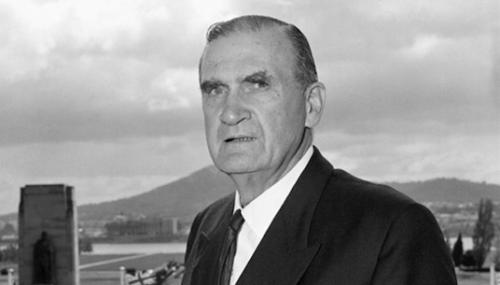
“Whimsy” columnist CLIVE WILLIAMS share some of the positives and negatives of living with our big-footed friends, the kangaroos…
KANGAROOS are a contentious topic in Canberra. Some see our national symbol as a threat to their vehicles, while others see them as unfortunate victims of Canberra’s expansion.

Kangaroos are the largest species in the family “macropodidae” (macropod meaning large foot). Intermediate size macropods are called “wallaroos”, and smaller ones “wallabies”. There are about 70 macropod species, with many of the smallest species in danger of extinction.
The largest kangaroos are the red kangaroo, eastern grey kangaroo, western grey kangaroo and antilopine kangaroo. The eastern grey is the most common kangaroo in Canberra. Canberra is also home to common wallaroos (the males are black and females pale grey). Kangaroos have adapted much better than their smaller cousins to human land-clearing and other habitat changes.
Kangaroos are the only large animals to use hopping as a means of locomotion. Comfortable hopping speed for a kangaroo is about 20–25 km/h. They can accelerate up to 70 km/h over short distances, and hop at 40 km/h for two kilometres – but they can’t go backwards.
Kangaroos are shot throughout Australia for meat, hides, to keep them off grazing land and roads, and in Canberra to reduce their numbers. Kangaroo meat has perceived health benefits for human consumption compared to traditional meats due to its low-fat content.
Because of its grazing habits, the kangaroo has developed specialised teeth. Silica in grass is abrasive, so kangaroo molars are ground down and move forward in the mouth before they eventually fall out and are replaced by new teeth that grow from the back. Among mammals, only kangaroos, elephants and manatees have this capability.
Unlike cattle and sheep, kangaroos release almost no methane. Scientists are interested in the possibility of transferring the bacteria responsible for this process from kangaroos to cattle, since the greenhouse gas effect of methane is 23 times greater than that of carbon dioxide. There’s also interest in crossing sheep with kangaroos; the aim of course is to produce woolly jumpers.
Kangaroos are shy and retiring by nature, and in normal circumstances present no threat to humans.
In 2003, Lulu, an eastern grey that had been hand-reared, saved a farmer’s life by alerting family members to his location when he was injured by a falling tree branch. On May 19, 2004, it received the RSPCA Australia National Animal Valour Award.
Some causes for erratic or dangerous kangaroo behaviour include panic, injury, illness, extreme thirst, and hunger. The only reliably documented case of a human fatality from a kangaroo attack occurred in NSW in 1936. A hunter was killed when he tried to retrieve his two dogs that had attacked a large kangaroo.
Nine out of 10 vehicle/animal collisions in Australia involve kangaroos. Kangaroos grazing by the roadside at night can be dazzled by headlights or startled by engine noise and leap in front of vehicles. Since kangaroos can weigh up to 90 kilograms, the impact can be severe, killing the kangaroo, badly damaging the vehicle, and potentially injuring the occupants.
The female kangaroo is permanently pregnant, except on the day she gives birth. She can “freeze” the development of an embryo in times of drought and in areas with poor food sources. During a dry period, males will not produce sperm, and females will conceive only if green vegetation is plentiful.
Large kangaroos have no natural predators, but younger ones and smaller species may be killed by dingoes, foxes, feral cats, and dogs – domestic and feral.
Whether culling is necessary in Canberra to control kangaroo numbers is questionable. Kangaroos control their numbers themselves relative to the availability of food. Much of the kangaroo/vehicle problem in Canberra is due to suburban encroachment into areas where kangaroos have always existed.
How best then to reduce collisions with kangaroos when they’re most active at night?
The range of vehicle headlights on low beam is around 40 metres and on high beam around 100 metres. If you’re travelling at 80 km/h with a fast reaction time of one second, the average stopping distance is 60 metres (but for two seconds it’s 80 metres). It’s therefore prudent to drive well below the speed limit on some of Canberra’s roads at night, particularly where there are kangaroos visible, dead kangaroos by the roadside, or nature reserves bordering the road.
Note that vehicle-mounted “kangaroo whistles” are ineffective for preventing collisions with kangaroos. Tests have shown that kangaroos don’t react to the high frequency sound they emit.
Clive Williams is a Canberra columnist.
Who can be trusted?
In a world of spin and confusion, there’s never been a more important time to support independent journalism in Canberra.
If you trust our work online and want to enforce the power of independent voices, I invite you to make a small contribution.
Every dollar of support is invested back into our journalism to help keep citynews.com.au strong and free.
Thank you,
Ian Meikle, editor





Leave a Reply